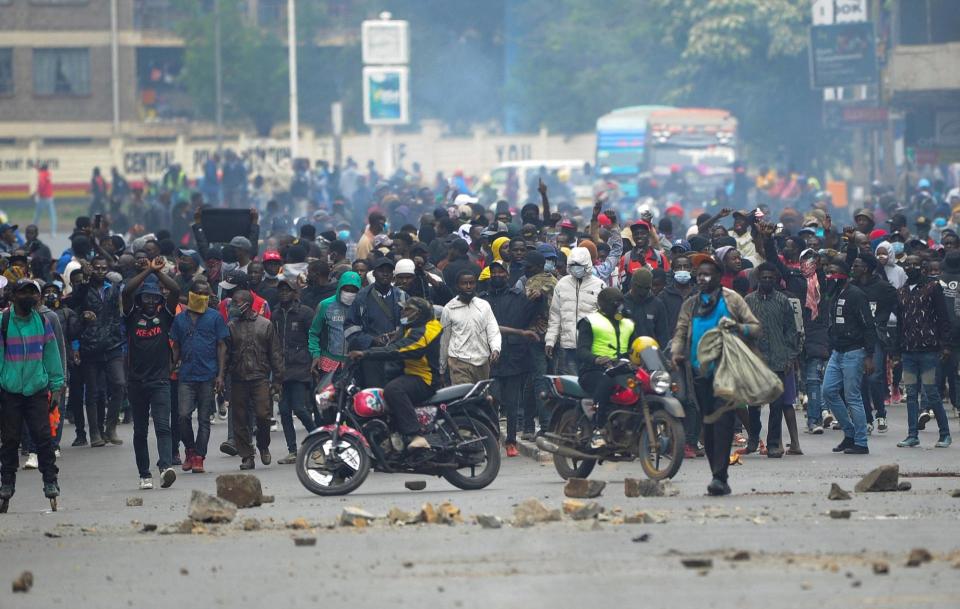Kenyan media ‘under attack’ by police in protests
The News
NAIROBI — Kenyan journalists have accused the police of subjecting them to extreme violence during the country’s ongoing protests.
Labor unions representing the media have demanded the arrest of police officers they say are responsible for the alleged rights abuses which they say include journalists being shot at, injured, and abducted.
Wanjeri Kariuki, a reporter with local TV station K24, was shot in the thigh by a police officer while covering protests in the Rift Valley city of Nakuru on Tuesday, July 17, according to witnesses and video posted on X. This was despite her being in visible press gear. On Wednesday Journalists in Nakuru and Kiambu, just north of Nairobi, took to the streets, demanding the officer’s arrest.
On Wednesday morning, footage recorded by his son showed Macharia Gaitho, a veteran writer and columnist with the Nairobi-based Daily Nation newspaper, being forced into a vehicle by several men.
He was released hours later following a public uproar, with the police claiming it was a case of mistaken identity. Instead, they said, they meant to arrest Francis Gaitho — a content creator popular on TikTok and X who has voiced support for the protests. But Gaitho, however, insisted that the police were targeting him.
The police have also often fired teargas directly at reporters covering the protests for local and international media, according to a number of journalists. Others have reported being assaulted.
The Kenya Editors Guild (KEG) said it is following up on reports that CNN photojournalist Fabien Muhire was sprayed with harmful chemicals by police as he documented the protests in Nairobi’s Central Business District.
Know More

The protest movement began in response to an unpopular finance bill and its members have since shifted their focus, calling for Ruto’s resignation.
The police service has been under scrutiny because at least 50 people have been killed in the protests so far, according to the Kenya National Commission on Human Rights.
Several individuals have reportedly been abducted by the police, sparking widespread criticism. The government funded Independent Policing Oversight Authority has received reports of at least 10 abductions and have called for the arrest of police chiefs.
Attacks on media have allegedly included threats to media houses on government advertising. This has been criticized by media leaders. “We will not allow the media to be undermined and silenced in this manner. Threats such as denying us advertisements for publishing certain stories are unacceptable,” said Zubeida Kananu, chair of the Kenya Editors Guild (KEG).
Room for Disagreement
The police service has denied targeting journalists. The service said on Wednesday that Gaitho’s abduction was a case of mistaken identity.
“We do not target journalists in any way, and today’s incident is highly regrettable,” a statement posted on X read. “The National Police Service remains committed to working with the media while discharging our mandate of promoting accountability and transparency.”
Step Back
Ruto has made a number of concessions since the protests began, including the withdrawal of the finance bill and the dismissal of nearly his entire cabinet.
He has disclosed plans to form a “broad-based cabinet”. He also announced a national dialogue forum, which failed to take off on July 15 as scheduled. Several leaders of the opposition coalition Azimio have refused to take part in the talks which have the backing of opposition leader Raila Odinga.

